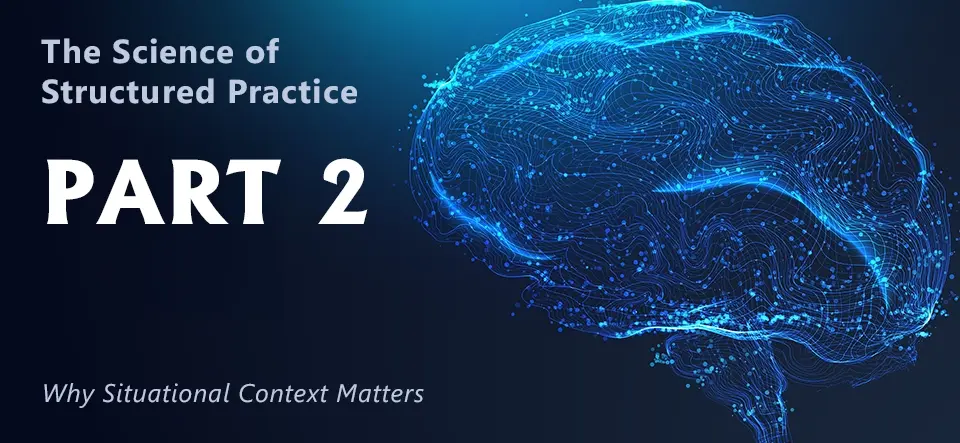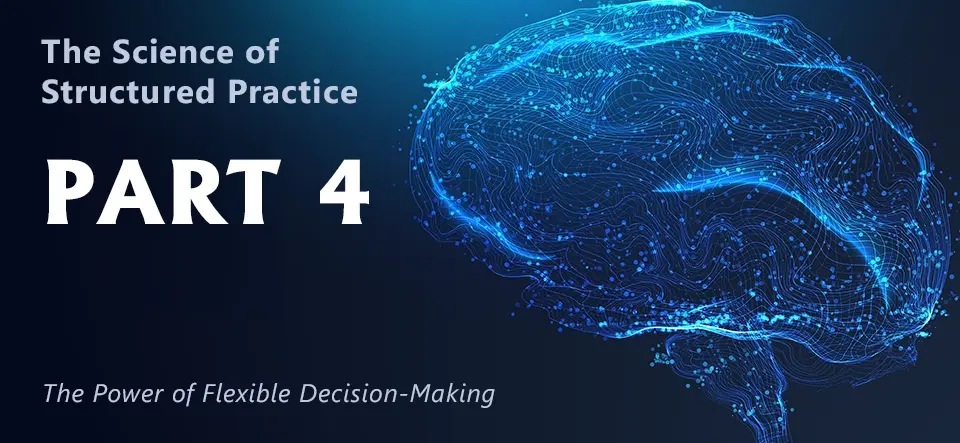
Your top performers might hold the key to transforming organizational performance: They consistently make better decisions, and sharing that success can elevate performance across teams. Why? Because their expertise isn't just knowledge - it's the ability to recognize patterns and make better decisions in fluid, real-world situations. Here we'll explore how cognitive apprenticeship principles and structured practice, delivered through immersive technology, can help you close the gap between top performers and the rest of your team.
The Performance Gap Challenge
Consider these scenarios:
- A sales leader watches their top performer effortlessly guide multiple stakeholders through a major opportunity while others struggle with similar situations
- A clinical director sees experienced physicians confidently make treatment decisions by recognizing subtle patterns that others miss
- A leadership team observes their best coaches consistently develop high-performing teams while others can't replicate their success
When asked how they achieve these results, top performers often respond with "it depends" or "you have to read the situation." While true, this offers little guidance to others trying to develop similar capabilities.

REAL-WORLD IMPACT
This performance gap has tangible consequences:
- Sales teams miss opportunities because they don't recognize key stakeholder dynamics that top performers naturally navigate
- Medical outcomes vary widely when practitioners can't access the pattern recognition that guides experienced clinicians
- Leadership development stalls when organizations can't scale their best coaches' ability to guide others
Traditional training approaches fall short because they focus primarily on knowledge transfer - what to do in specific situations. But top performance isn't just knowing what to do - it's recognizing when and why to do it. This requires both competence in decision-making and confidence to apply that judgment in real situations.
The solution lies in understanding how top performers develop their decision-making capabilities and finding ways to make this success visible and sharable.
Bridging the Gap: Cognitive Apprenticeship
While traditional apprenticeship works well for visible skills like craftsmanship or surgical techniques, many of today's performance gaps involve decision-making that's harder to observe. The best sales strategies, clinical judgments, and coaching approaches often happen inside people's heads. Cognitive apprenticeship principles help us capture and share these thinking patterns that drive success.
Making Thinking Visible
Top performers see patterns others miss. They:
|

|
This is where cognitive apprenticeship principles provide a framework for making top performer thinking visible to others.
Capturing Coaching Excellence
In cognitive apprenticeship, coaches make expert thinking visible by:
|

|
These coaching patterns systematically expose the thinking behind optimal decision-making. Together with top performer patterns, they form the foundation for structured practice methodology.
Through immersive simulation technology, we can now scale this approach effectively. By capturing both expert decision patterns and proven coaching guidance in interactive learning environments, we create consistent learning experiences that develop more top performers. This isn't about replacing human coaches - it's about extending their reach and impact through structured practice.
Structured Practice in Action
Let's see how cognitive apprenticeship principles come alive through structured practice, transforming performance across teams.
Mentored Decision Making
Structured practice is entirely experiential where learners:
|

|
This isn't freeform practice - it's carefully structured to build both competence and confidence at scale through interactive simulation technology. When learners make decisions in these immersive environments, they receive the same kind of nuanced feedback great coaches provide, helping them understand not just what to do, but why certain approaches work better than others.
Building Mental Models
Through this mentored experience, learners develop more robust mental models that better mirror how top performers think:
|

|
EXAMPLE 1 – Consider a sales manager learning to develop their team. Rather than just studying coaching frameworks, they:
-
- Experience realistic coaching scenarios
- Make strategic decisions about development approaches
- See how different techniques play out
- Receive expert guidance on their choices
EXAMPLE 2 – Or a physician learning to incorporate a new treatment option:
-
- Experience different patient scenarios
- Evaluate when the new therapy is appropriate
- See how different patient factors affect outcomes
- Receive expert clinical guidance on decisions
Through this structured approach, learners build sophisticated mental models that help them recognize patterns and make better decisions across diverse situations.
Measuring Impact
Decades of research and real-world experience show that one-on-one coaching significantly improves performance. The challenge has always been scaling this approach and measuring its impact.
Together, structured practice and simulation technology make it possible to:
|
|
Organizations see this impact through:
|

|
This dual impact - improving both decision quality and consistency - transforms how organizations develop top performers.
Looking Ahead
Making top performer thinking visible and sharable is a powerful start. In Part 4 of this series, we'll explore how exposure to multiple perspectives helps learners develop even more robust decision-making capabilities. We'll see how structured practice creates the foundation for handling an ever-wider range of business situations successfully.
References
- Collins, Allan, et al. "Cognitive apprenticeship: Making thinking visible." American Educator 15.3 (1991): 6-11.
- Stalmeijer, R.E., et al. "Cognitive apprenticeship in clinical practice: can it stimulate learning in the opinion of students?" Advances in Health Sciences Education, 2009.
- Ericsson, K. A. "Deliberate Practice and Acquisition of Expert Performance." Academic Emergency Medicine 15 (2008): 988-994.



